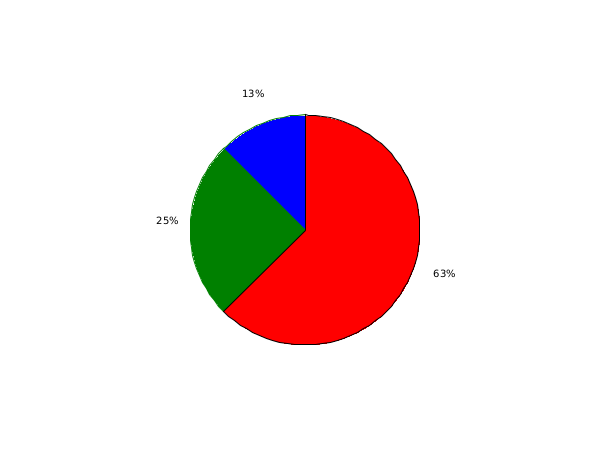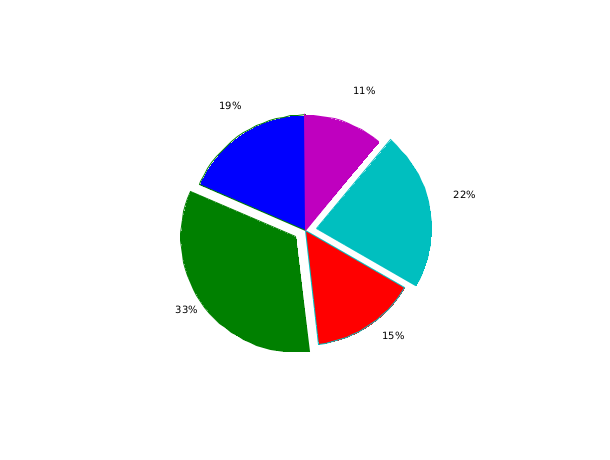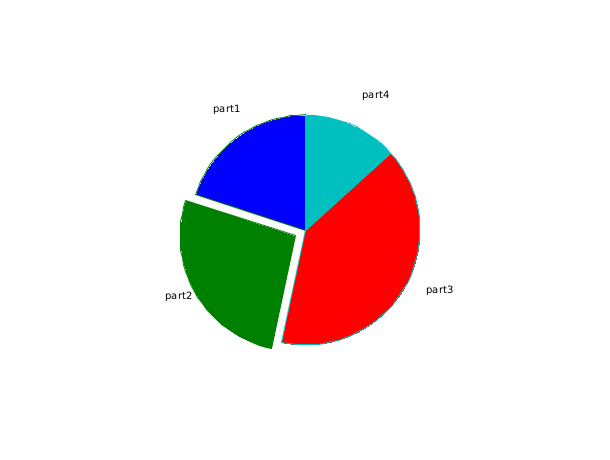pie
draw a pie
Syntax
pie(x) pie(x[,sp[,txt]]) h = pie(...)
Arguments
- x
a scalar or a vector of positive reals.
- sp
a real scalar or a vector of reals.
- txt
a cell or a vector of strings.
- h
This optional output contains a handle to a
Compoundentity whose children are:h.children(1): ACompoundwhose children are the labels of the slices (Text entities)h.children(2): ACompoundwhose children are the slices (Polyline entities)
hto modify properties of a specific or all Text or Polyline entites after they are created. For a list of properties, see text_properties or polyline_properties.
Description
pie(x): if size of x is N then pie function draws a pie
with N parts, the area of the ith part is equal to (x(i)/sum(x))*( surface
of the unit circle).
pie(x,sp):the sp vector allows to cut one or several
parts of the pie, (the size of sp must be equal to N). if the value of the
ith index of sp is different of zero then the ith part is separated from
the others by a space, else if it' s equal to zero then it is attached to
the others.
pie(x,txt): the txt vector allows to write a text for
each part of the pie, the ith component of txt corresponds to the ith part
(default : it's written the percentages which corresponds to the parts
surface). The size of txt must be equal to N.
Examples
// First example : one input argument x=[1 2 5] scf(0); pie([1 2 5]);

// Second example : two input arguments x=[5 9 4 6 3], sp=[0 1 0 1 0], the second and the fourth are separated of the others scf(1); pie([5 9 4 6 3],[0 1 0 1 0]);

// Third example : three input arguments, x=[3 4 6 2], sp=[0 1 0 0], txt=["part1","part2","part3","part4"] scf(2); pie([3 4 6 2],[0 1 0 0],["part1","part2","part3","part4"]);

See also
- xfpolys — fill a set of polygons
History
| Версия | Описание |
| 2025.0.0 | Function returns the created handle(s). |
| Report an issue | ||
| << graphical editor | Графики | multiscaled plots >> |